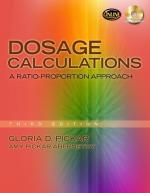|
This section contains 737 words (approx. 3 pages at 300 words per page) |

|
The concept of proportion is closely related to the concept of ratio; it is nearly impossible to discuss one without defining the other. Specifically, a proportion is an equation of two equal ratios; if two (or more) ratios are equal, they are considered proportional. The ratios 3/5, 6/10, and 12/20, for example, are proportional; each is a constant multiple of another. If each element of the ratio is a constant multiple of the associated element in the second ratio, then the ratios are considered proportional. The ratio 1:3:8, for example, is proportional to the ratio 4:12:32, since each element in the second ratio is exactly the associated element in the first ratio multiplied by 4. However, the ratio 1:3:8 is not proportional to the ratio 4:12:26. In shorthand notation, proportions may be written as x:y::ab, which reads "x is to y as a is to b."
Deriving the basic proportion equation—a...
|
This section contains 737 words (approx. 3 pages at 300 words per page) |

|


